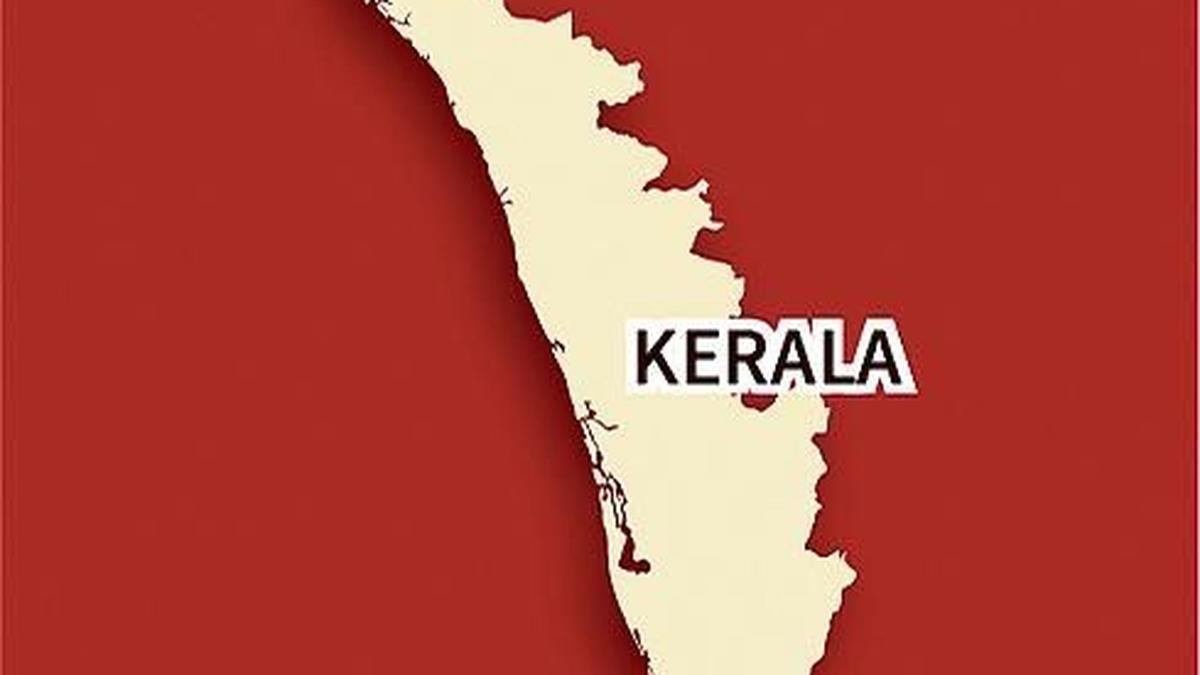Head of Botany Department Rasmi A.R. impart facts on the largest and heaviest seed in the plant kingdom, the double coconut, at an exhibition being held at Government Victoria College, Palakkad, on Tuesday.
The Botany Department of Victoria College here is hosting a two-day extravaganza for botany enthusiasts, showcasing an exclusive exhibition of rare plants and seeds as part of its platinum jubilee celebrations.
On Tuesday, the inaugural day, visitors were awestruck as they got to see and touch plants they had previously only seen in photos and videos. The display also challenged their existing knowledge, offering new insights into the fascinating world of botany.
“We have heard the popular Malayalam song ‘Devadaru Poothu Nin Manasin Thazhavarayil’. But did you know that Deodar cedar trees do not flower? Instead, they grow cones,” explained assistant professor Alen Alex Philip as students touched the cones in surprise.
Array of rare plants
Visitors were introduced to rare plants like Equisetum, also known as the gold indicator plant. Rasmi A.R., Head of the Botany Department, explained, “This plant is a valuable tool for biogeochemical prospecting, as its tissues can indicate the presence of gold deposits in the surrounding soil.”
The exhibition featured an impressive array of specimens, including algae, fungi, lichen and bryophytes. A special stall showcased a geological timeline, tracing the evolution of plants from algae to pteridophytes and gymnosperms.
Botany students of the college were on hand to explain various fascinating plants, such as bird’s nest fern, walking fern, maidenhair fern and dog’s ear fern.
Endemic to Palakkad
A rare highlight of the exhibition was Cycas annaikalensis, a cycad species found only in Palakkad. “This plant is endemic to our region and cannot be found anywhere else in the world,” said Mr. Philip, proudly pointing to the species discovered in 2006.
Another rare treat for botanists was the sapling of the Wollemi pine, a critically endangered coniferous tree native to Australia. “There are only about 20 Wollemi pine trees left in the world,” said Mr. Philip.
The exhibition showcased the world’s largest and heaviest seed. “This is the seed of Lodoicea maldivica, a rare palm tree from the Seychelles. It is famous for producing the double coconut, the largest seed,” said Dr. Rasmi.
Crowd pullers
Other highlights included the snake climber plant and Sanjeevani (Selaginella bryopteris), a plant steeped in legend. Known for its ability to survive drought by curling up and reviving when watered, Sanjeevani fascinated many students. Its mention in the epic Ramayana added to its allure.
The insectivorous Nepenthes, or pitcher plant, was a crowd puller. Student volunteers enthusiastically explained how the Venus flytrap captures prey by snapping its leaves shut upon touch. “This plant thrives in nutrient-poor soil by supplementing its diet with insects,” they said.
The exhibition showed different types of forests and highlighted the Palakkad Gap in the Western Ghats. The department’s museum displayed old and new farming tools and household items. Student projects and startups were also showcased. In another section, researchers explained about plants that can be harmful, how plant cells work, natural colours from plants and how plants make food through photosynthesis.
The show will conclude on Wednesday.
Published – September 23, 2025 08:33 pm IST





